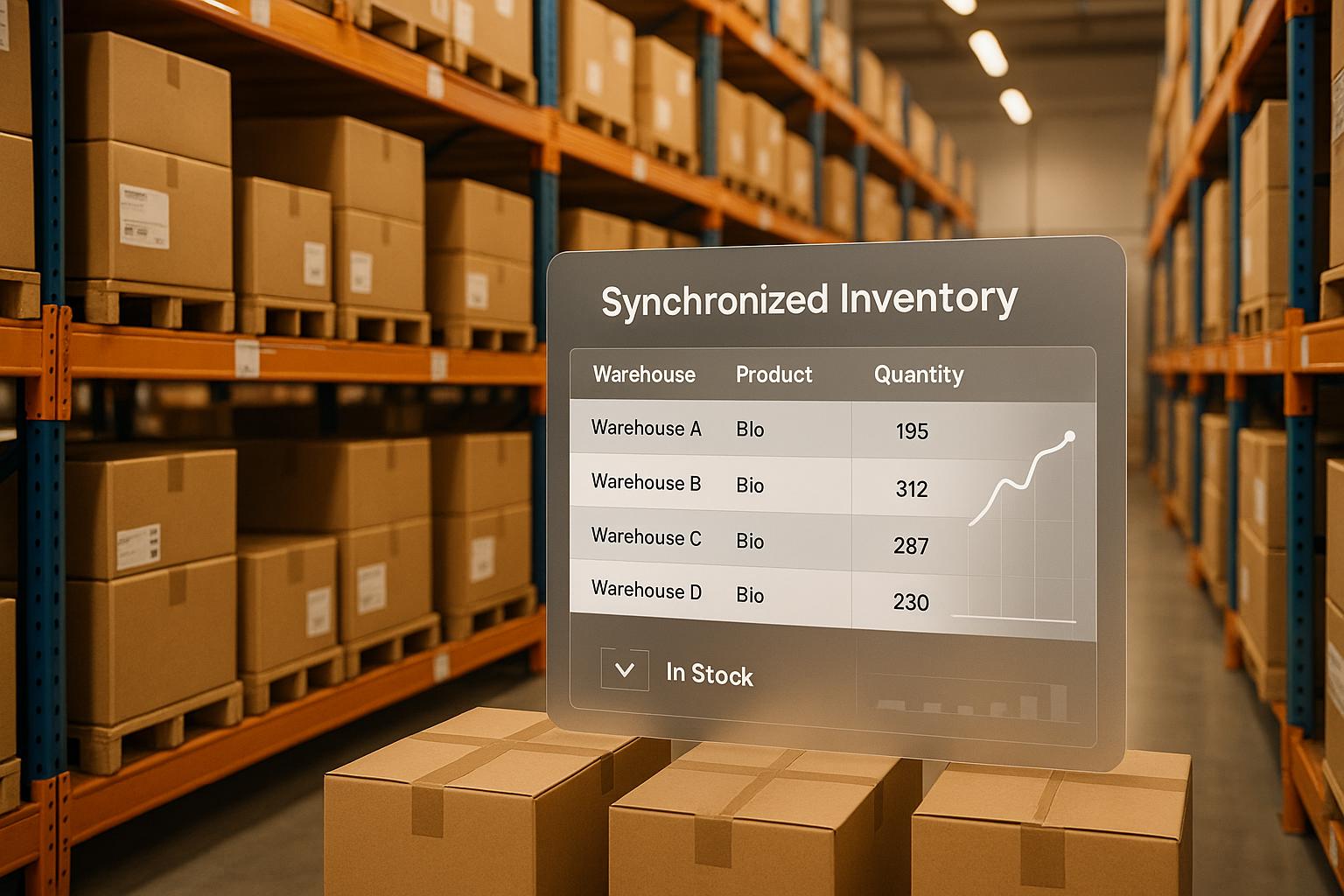Looking for the best way to grow your PaaS business? Here are the top 7 revenue models that drive B2B growth, improve customer retention, and maximize profitability.
Quick Overview of the 7 Models:
- Monthly and Annual Subscriptions: Steady revenue with flexible payment options.
- Pay-Per-Use Pricing: Charges based on actual usage, ideal for fluctuating workloads.
- Free-to-Paid Conversion: Freemium models that encourage upgrades to paid tiers.
- Results-Based Pricing: Ties costs to measurable business outcomes.
- Platform Marketplace Fees: Revenue from third-party integrations and services.
- Custom Features and Extensions: Tailored solutions for specific client needs.
- Channel Sales Programs: Partner with resellers and integrators for broader reach.
Quick Comparison:
| Revenue Model | Predictability | Setup Complexity | Growth Potential |
|---|---|---|---|
| Monthly/Annual Subscriptions | High | Moderate | Steady |
| Pay-Per-Use Pricing | Moderate | Low | Variable |
| Free-to-Paid Conversion | Lower | High | High |
| Results-Based Pricing | Lower | High | High |
| Platform Marketplace Fees | Moderate | High | High |
| Custom Features | High | Moderate | Moderate |
| Channel Sales Programs | Moderate | High | High |
Key Takeaway: Start with a revenue model that aligns with your resources and customer needs. Experiment with hybrid approaches to scale effectively. Let’s explore each model in detail.
Ep 25 -Tim Willey - How a $100+m B2B SAAS company ...
1. Monthly and Annual Subscriptions
PaaS providers often rely on monthly and annual subscription models to ensure steady revenue and offer pricing options that suit different business needs. These models allow businesses to choose between frequent monthly payments or committing to a longer-term annual plan.
Monthly Subscriptions
Monthly plans are ideal for:
- Small to medium-sized businesses managing limited cash flow
- Companies exploring platform solutions before making a long-term commitment
- Organizations with fluctuating user numbers or seasonal demand
Annual Subscriptions
Annual plans, on the other hand, provide advantages such as reduced processing costs and more predictable cash flow.
Key Differences Between Monthly and Annual Plans
| Component | Monthly Plan | Annual Plan |
|---|---|---|
| Payment Frequency | Monthly billing | Upfront annual payment |
| Discount | Standard rate | Discounted rate |
| Contract Flexibility | Month-to-month | 12-month commitment |
| Resource Planning | Variable | Predictable |
| Cash Flow Impact | Smaller regular payments | Large upfront payment |
Tips for Effective Subscription Management
- Offer Clear Value Tiers: Define packages based on features, user limits, and support levels.
- Transparent Pricing: Show both monthly and annual rates prominently, emphasizing the savings of an annual plan.
- Enable Easy Upgrades: Allow seamless transitions to higher tiers as customer needs grow.
Strengthening Customer Relationships
To maintain and grow your subscription base, focus on:
- Regular outreach by customer success teams to address needs and concerns
- Monitoring usage patterns to identify accounts that may need attention
- Sending automated renewal reminders and offering early renewal incentives
Up next, we’ll dive into the pay-per-use model, another option for diversifying revenue streams.
2. Pay-Per-Use Pricing
This pricing model charges customers based on their actual usage, making it a great fit for businesses that experience fluctuating workloads.
Common Usage Metrics
Here are some typical ways usage is measured:
- API Calls: Charges based on the number of API requests made.
- Data Processing: Fees determined by the volume of data processed.
- Compute Time: Billed for the actual time servers or processors are used.
- Storage: Costs calculated based on data storage requirements.
How to Set Up Usage-Based Pricing
To implement this model effectively, focus on these components:
| Component | What It Does | Best Practice |
|---|---|---|
| Usage Tracking | Monitors usage in real time | Use automated systems for detailed tracking. |
| Billing Cycles | Calculates and invoices usage | Opt for monthly billing with daily breakdowns. |
| Rate Structure | Adjusts rates based on volume | Offer tiered pricing with discounts for higher usage. |
| Usage Limits | Sets consumption thresholds | Include limits and automated alerts to manage overages. |
Features to Help Control Costs
To help customers manage their expenses, include these tools:
- Usage Dashboards: Provide real-time visibility into consumption.
- Alert Systems: Notify users when they approach their limits.
- Budget Controls: Allow spending caps to prevent unexpected charges.
- Usage Forecasting: Offer tools to predict future costs.
Combining Pay-Per-Use with Subscriptions
A hybrid model can offer the best of both worlds - revenue stability and flexibility. Here's how:
- Charge a base subscription fee for core features.
- Add pay-per-use fees for extra consumption.
- Offer volume discounts to reward higher usage.
- Provide reserved capacity options for customers with predictable needs.
Keep Pricing Transparent
Make sure customers understand their costs with:
- Detailed usage reports.
- Cost calculators to estimate charges.
- Sample scenarios to illustrate pricing.
- Regular billing summaries for clarity.
This approach works well for platforms offering scalable infrastructure, data processing, or API services. Up next, learn how this model can complement other revenue strategies.
3. Free-to-Paid Conversion
The freemium model allows users to access basic features at no cost, with the option to upgrade for more advanced tools.
Key Elements of Effective Freemium Models
| Component | Purpose | Approach |
|---|---|---|
| Free Tier Value | Show platform capabilities | Provide essential features that highlight core benefits |
| Usage Limits | Encourage upgrades | Set thresholds that align with user growth |
| Premium Features | Motivate conversions | Include critical tools in paid tiers |
| Upgrade Path | Simplify transitions | Offer clear steps between pricing levels |
Improving Free-to-Paid Conversion Rates
Boost conversions by ensuring the free tier offers meaningful features while setting usage limits that nudge users toward upgrades.
Feature Allocation Strategy
Distribute features across tiers to encourage upgrades effectively:
| Tier | Feature Focus | Target Audience |
|---|---|---|
| Free | Basic functionality, API access | Startups, developers |
| Professional | Advanced tools, higher limits | Growing businesses |
| Enterprise | Custom solutions, premium support | Large organizations |
Tools for Conversion and User Management
Use these strategies to manage users and increase conversions:
- Usage Analytics: Understand how users interact with features.
- In-Platform Messaging: Highlight premium benefits at strategic moments.
- Upgrade Prompts: Notify users when they approach free-tier limits.
- ROI Calculators: Help users see the value of upgrading.
- Technical Restrictions: Set clear usage boundaries and policies.
- Self-Service Resources: Offer guides and FAQs for free-tier users.
- Infrastructure Monitoring: Track and manage resource usage efficiently.
Selecting Premium Features
Include premium features that provide clear benefits to businesses:
- Advanced security and compliance options
- Higher API rate limits
- Priority customer support
- Custom integrations
- Detailed analytics and reporting tools
In the next section, we’ll look at how these freemium strategies fit into broader revenue plans to drive long-term growth in B2B markets.
4. Results-Based Pricing
Results-based pricing ties platform costs directly to measurable business outcomes, creating a pricing model where both providers and customers benefit from shared success.
Key Performance Metrics
| Metric Category | Examples | How It's Measured |
|---|---|---|
| Revenue Impact | Sales growth, conversion rates | Direct revenue tracking |
| Efficiency Gains | Time saved, process automation | Before-and-after comparisons |
| Resource Optimization | Reduced infrastructure costs | Cost difference analysis |
| User Engagement | Active users, feature adoption | Usage analytics |
Steps to Implement
Set Clear Metrics: Identify specific, measurable KPIs with baseline data. Ensure these metrics are monitored transparently and updated in real time.
Pricing Structure Elements:
- A base fee covering core platform services
- Variable charges linked to performance outcomes
- Bonuses for surpassing agreed targets
- Risk-sharing mechanisms for unmet objectives
Leveraging AI for Tracking
AI tools can streamline this process by automating data collection, providing real-time dashboards, offering predictive insights, and analyzing user behavior.
Managing Risks
- For providers: Use minimum revenue guarantees, validate performance metrics regularly, ensure clear attribution, and have a dispute resolution process in place.
- For clients: Include performance guarantees, service-level agreements (SLAs), transparent reporting, and exit clauses in contracts.
Keys to Success
1. Define Metrics Clearly
Choose performance indicators that directly reflect business value. Metrics should be easy to measure and agreed upon by both parties.
2. Use the Right Technology
Implement strong analytics tools to track metrics accurately. AI-driven systems can enhance data collection and analysis.
3. Review Regularly
Schedule periodic check-ins to ensure the pricing model stays aligned with business goals and market trends. Adjust targets and metrics when necessary.
Common Challenges and Solutions
| Challenge | How to Address It |
|---|---|
| Metric Attribution | Use multi-touch attribution models |
| Data Accuracy | Invest in advanced validation tools |
| Aligning Goals | Hold regular stakeholder reviews |
| Verifying Performance | Use third-party audits and verification systems |
sbb-itb-01010c0
5. Platform Marketplace Fees
Marketplace fees generate revenue through third-party integrations, extensions, and services. These fees complement subscription and usage-based models, creating additional income streams by tapping into the offerings of third-party vendors.
Fee Structure Components
| Fee Type | Typical Range | Collection Point |
|---|---|---|
| Listing Fees | $99-499/year | Initial and renewal |
| Transaction Fees | 15-30% | Per sale |
| Premium Placement | $299-999/month | Monthly billing |
| API Usage Fees | $0.01-0.05/call | Usage-based |
Strategies to Boost Revenue
- Use tiered commission rates that adjust based on factors like transaction volume, vendor experience, product category, and customer feedback.
- Regularly monitor marketplace performance, gather customer insights, and conduct audits to ensure continued value.
Marketplace Growth Tips
- Vendor Onboarding: Offer resources like technical documentation, marketing tools, integration testing, and development support to attract and assist vendors.
- Building Customer Trust: Use secure payment systems, clear refund policies, dispute resolution mechanisms, and transparent fee structures.
- Platform Improvements: Automate integrations, provide analytics dashboards, and support multiple payment options to enhance user experience.
Managing Risks
- Platform Security: Screen vendors, monitor for fraud, enforce policies, and ensure compliance with regulations.
- Protecting Revenue: Set minimum transaction thresholds, hold payments temporarily, use fraud detection tools, and manage chargebacks effectively.
Key Metrics to Track
- Gross Merchandise Value (GMV)
- Average transaction size
- Vendor retention rates
- Customer satisfaction scores
- Adoption rates of integrations
Best Practices
- Keep fees transparent and easy to understand.
- Provide comprehensive documentation for vendors.
- Offer strong vendor support.
- Regularly assess marketplace performance and make necessary improvements.
6. Custom Features and Extensions
Custom features and extensions are another way PaaS providers can boost revenue and keep customers coming back. By tailoring solutions to meet specific client needs, providers can create new income opportunities through custom development, integration, and ongoing support. This personalized approach not only solves business challenges but also helps build stronger client relationships.
Here’s how providers can make the most of custom offerings:
- Understand client requirements and technical needs
- Create modular, scalable solutions
- Price services based on development complexity and support needs
- Ensure top-notch quality assurance for performance and security
This strategy works well alongside other revenue streams, offering tailored solutions that enhance customer engagement.
7. Channel Sales Programs
Channel sales programs help businesses grow by teaming up with resellers, system integrators, and value-added partners. This approach boosts market reach while avoiding the costs tied to a direct sales team.
Here are the key components of a successful program:
- Tiered Partnership Levels: Create partnership levels based on partner performance and commitment. Offer better benefits and incentives as partners move up the tiers, encouraging them to stay engaged and perform well.
- Revenue Sharing Models: Use commission structures that reward higher sales volumes. This keeps partner goals aligned with your business growth.
- Partner Enablement: Equip partners with the tools they need to succeed - technical training, sales materials, easy deal registration, and access to dedicated resource portals. These resources allow partners to expand your market presence effectively.
Best Practices to Keep in Mind:
- Evaluate partners for their market reach and technical capabilities.
- Clearly define territories to avoid conflicts.
- Track metrics like partner-driven revenue, customer satisfaction, and deployment success.
- Invest in efficient support systems to assist partners.
The goal is to strike a balance between giving partners the freedom to operate and maintaining control over your brand. A well-structured program creates clear opportunities for partners to increase their earnings while supporting your business growth.
Revenue Model Performance Matrix
Here’s a breakdown of how different revenue models perform based on key metrics. This matrix helps compare their strengths and challenges:
| Revenue Model | Predictability | Retention | Setup Requirements | Growth Potential |
|---|---|---|---|---|
| Monthly/Annual Subscriptions | High | High | Moderate | Steady |
| Pay-Per-Use | Moderate | Moderate | Low | Variable |
| Free-to-Paid Conversion | Lower | Moderate to High | High | High |
| Results-Based Pricing | Lower | High | High | High |
| Platform Marketplace Fees | Moderate | High | High | High |
| Custom Features | High | Very High | Moderate | Moderate |
| Channel Sales Programs | Moderate | Moderate to High | High | High |
Key Takeaways:
- Revenue Predictability: Models like Monthly/Annual Subscriptions and Custom Features provide steady and reliable income streams.
- Customer Retention: Custom Features and Results-Based Pricing excel at keeping customers engaged by offering tailored solutions that minimize churn.
- Setup Complexity: While Pay-Per-Use is easy to implement, models like Free-to-Paid Conversion and Platform Marketplace Fees require more resources upfront.
- Growth Opportunities: Despite their revenue unpredictability, Free-to-Paid Conversion and Results-Based Pricing have strong potential for scaling.
Strategic Considerations:
- Resource Allocation: Complex revenue models often need more upfront investment but can yield better returns over time.
- Market Position: Established platforms often benefit from using a mix of revenue models to diversify income streams.
- Customer Segments: Large enterprises tend to favor predictable subscription models, while smaller or growing businesses lean toward usage-based pricing.
Many successful PaaS companies start with straightforward models and gradually expand their revenue streams as they grow. This allows them to refine their strategies and maximize profitability over time.
Next Steps
Choose a PaaS revenue model that aligns with your business goals, market position, and available resources.
Evaluate Your Market Position
Start by analyzing your Total Addressable Market (TAM) and competitive standing. Tools like The B2B Ecosystem's TAM Analyst can help identify your most promising customer segments. This analysis provides a strong foundation for deciding which revenue streams to explore.
Test Multiple Revenue Streams
Kick things off with your primary revenue model, then experiment with additional models based on customer feedback. Keep an eye on metrics like Customer Acquisition Cost (CAC) and Lifetime Value (LTV). After validating your revenue streams, fine-tune your pricing to match.
Optimize Your Pricing Strategy
Use data-driven insights to adjust your pricing structure. Tools like The B2B Ecosystem's Price Strategist can help you improve conversion rates and maximize revenue.
Develop Your Go-to-Market Strategy
Ensure your go-to-market plan complements your revenue and pricing models to maximize your reach and impact.
| Strategic Element | Focus | Outcome |
|---|---|---|
| Market Entry | Target segments and positioning | Clear value proposition |
| Pricing Structure | Competitive rates and tiers | Better revenue generation |
| Distribution Channels | Key sales channels | Broader market coverage |
| Customer Success | Support systems for customers | Improved retention |
Tools and Implementation
Leverage these tools to support your strategy:
- GTM Brain: Analyze and refine your go-to-market strategy
- Offer Consultant: Craft appealing market offers
- AI Process Optimizer: Improve operational efficiency
- Leadership Roadmap: Plan for long-term success
Monitor and Iterate
Regularly track key performance indicators like CAC, churn rate, and Average Revenue Per User (ARPU). Use this data to tweak and improve your strategy over time.


